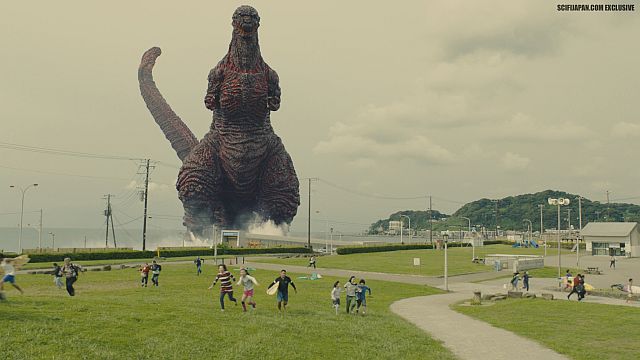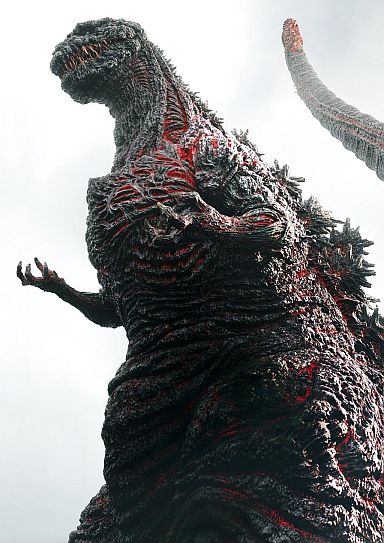
A scene from “Godzilla: Resurgence”
THE BIG bad boy is back!
Yes, that’s right true believers, the King of the Monsters returns to the silver screen to again trample Tokyo into dust in “Godzilla Resurgence.”
The question is: Which Godzilla are we speaking of?
Is it the original Godzilla from 1954 that suddenly emerged out of Tokyo Bay to light up the night with his atomic flame “breath” as well as the edited “Western/American” version featuring Raymond Burr as the intrepid reporter Steve Martin (a character only inserted for the international market)?
Or perhaps it is the giant lizard dubbed “Godzilla” in the 1998 reimagined version by director Roland Emmerich (“Independence Day”) who trashed most of Manhattan?
Or the really well done version of the King of the Monsters by British director Gareth Edwards (“Monsters”) in 2014 that trampled Honolulu International Airport and San Francisco–only to swim away into the Pacific Ocean–with his expected return in another sequel, Godzilla 2, in 2019?
No Dear Reader, this is the real (except no substitute) Godzilla who is stomping into a cinema near you; and this is not a CGI version of the big guy but again an actor (Mansai Nomura) in a rubber latex suit.
Of course with every Japanese version of Godzilla there are slight variations of the giant lizard—born out of the nuclear age from a devastated post-WWII Japan.
In the 1960’s Godzilla came to the rescue of his native Japan against invading space aliens and ruled the roost over “Monster Island” with his sometime wayward pals—the winged Mothra and Rodan.
Godzilla has also been the ever-watchful parent of Baby Godzilla.
No snickering, please!
As silly as Godzilla had been reduced, there is no question that if such a creature existed, the Tokyo real estate market would take a real pounding.
In “Godzilla Resurgence,” the 29th film appearance, Japan again is threatened by the sudden appearance of the towering figure. The “English” version of this movie takes a “dark comical satire” of the Japanese political landscape and for all intent—is nearly unwatchable. It stars Hiroki Hasegawa (as Rando Yaguchi), Satomi Ishihara (as Kayoco Anne Paterson), and Yutaka Takenouchi (as Hideki Akasaka).
We have the bureaucratic stumbling and bumbling of these and other more “serious” Government characters who were not even born when Godzilla appeared in 1954 … but who cares? Most the dialogue (such as it is), centers around who will take responsibility for Godzilla’s sudden appearance and the subsequent red tape involved.
Edwards’ version of Godzilla failed as the lead character was only on the screen for a total of only 11 minutes. That’s it.
Coming home to Japan, you have none of that. Even as the nigh-romantic trio doing nothing more than looking longingly at each other, Godzilla readies his “atomic breath.”

GODZILLA
Although this is clearly a man in a rubber suit, this time Godzilla seems almost medically enhanced. His chest is puffed out and he looks a bit old in the cheeks; and when he does fire up his radioactive breath, most of Tokyo, and its millions of scattering inhabitants, are simply melted. The Japanese military does what it can against Godzilla, who at this film’s beginning is so cute, you want to wrap him up in plastic and take him home like a baby golden retriever puppy.
But in truth, Godzilla is an indestructible force of nature. Armored tanks lay waste to the metropolitan shopping areas of Tokyo; the underground metro is likewise flattened as the monstrous lizard seems impervious to everything around him.
There is no reason to go see a Godzilla movie but if you have had a hard day at work or your kids are running around like vermin–then watching the King of the Monsters stomp over downtown Tokyo is just the cathartic remedy you need.
That is until a few years from now when Godzilla meets King Kong!
Questions, comments or travel suggestions, write me at [email protected].

